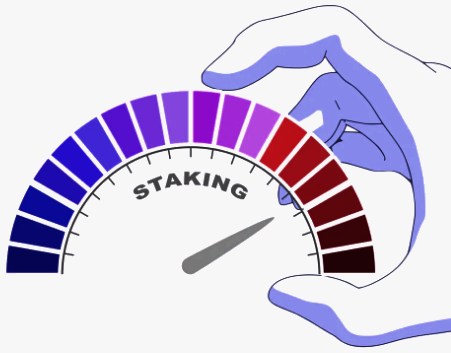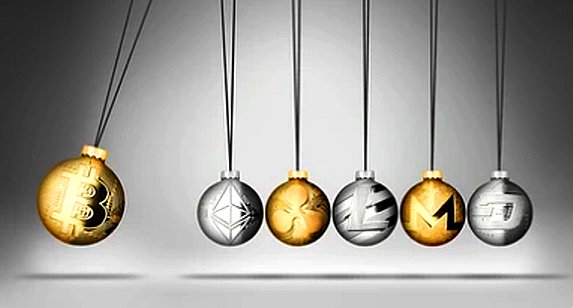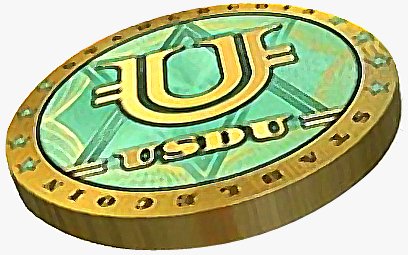Accredited InvestorsAltcoinAnatoli UnitskyAnti-Money Laundering (AML) In CryptoAPIArbitrageArtCoin TokenArticle DirectoryASICAuction Terminology GlossaryBasics of Stock Market InvestingBear MarketBest Crypto Payment Provider In the WorldBitcoinBlockchainBlockchain ConfirmationBlockchain Consensus MechanismBlockchain ForkBlockchain GlossaryBored Ape Yacht ClubBuild a Business That OutperformsBull MarketBuying SkyWay SharesByzantine Fault Tolerance (BFT) ExplainedCasascius CoinCentral Bank Digital Currency (CBDC)Centralized Crypto ExchangeCoinCoinsetCold WalletCollateralCommodity Futures Trading Commission (CFTC)Cross-Chain TechnologyCRUCrypto ExchangeCrypto GlossaryCrypto JokesCrypto Terms to KnowCrypto TickerCryptocurrencyCryptographyCryptojackingCryptounit BlockchainCryptounit GlossaryCryptounit ProgramdApp (Decentralized Application)Dead CoinDecentralized Exchange (DEX)Decentralized Finance (DeFi)Difference Between Bitcoin and EthereumDifferent Ways of Investing MoneyDigital CurrencyDistributed LedgerDo Your Own Research (DYOR)Dollar Cost Averaging (DCA)Dow Jones Industrial Average (DJIA)EncryptionERC-20ERC-721EthereumEvoScentFear Of Missing Out (FOMO)Fear, Uncertainty and Doubt (FUD)Fiat MoneyFNT Fintech CompanyGenesis BlockGlobal Unit PayGlossary of Banking TermsGlossary of Business TermsGlossary of Financial TermsHalvingHODLHot WalletHow Do I Start InvestingHow Rich is Satoshi Nakamoto?How to Create a BlockchainHow to Find Private InvestorsHow to Get Into FintechHow to Program Smart ContractsI Am Thrilled to Be a Part of This Global ProjectInitial Coin Offering (ICO)Initial Public Offering (IPO)Initial Token Offering (ITO)Innovation Basalt TechnologyInnovative Transportation TechnologiesInternational Bank Account Number (IBAN)Investing in Gold Mining StocksInvesting in Gold MiningJagerJoy of Missing Out (JOMO)Know Your Customer (KYC)LedgerLiquidity in CryptocurrencyMaker and Taker Fees in Crypto TradingMarket Capitalization (Market Cap)Meme CoinMetal Credit CardMetaMaskMillenials Now Have Access to Generational WealthMy Best Investment EverNew Digital EvolutionNFT GlossaryOff-Chain TransactionsOn-Chain TransactionsOpen Edition NFTPeer-to-Peer (P2P)Personal Loan GlossaryProbably the Best STO on the MarketProof of Stake (PoS)Real Estate Glossary of TermsReal Estate Investing GlossaryRebase TokenSecurities and Exchange Commission (SEC)Security Token ExchangesSecurity Token Offering (STO)Soulbound Decentralized Identities for Security TokensSoulbound ID Launch by Stobox Proves a SuccessSoulbound TokensStoboxStock Market GlossaryTestimonialsTether Platform and Token (USDT)UnitEx ExchangeUnitsky String TechnologiesUNTBUSDUValidatorWe Started Investing When We Were 25What are Blue Chip NFT?What are Blue Chip Stocks?What are Crypto Assets?What are Crypto Smart Contracts?What are CryptoPunks NFT?What are Digital Assets?What are Digital Collectibles?What are Gas Fees?What are Gas Wars?What are Hashmasks?What are Non Fungible Tokens?What are Non-Sufficient Funds (NSF)?What are Soulbound Tokens (SBT)?What are Stablecoins in Crypto?What are Transactions Per Second (TPS)?What are Utility NFTs?What are Utility Tokens?What Does Burning Crypto Mean?What Does Diamond Hands Mean?What Does Paper Hands Mean?What Does To The Moon Mean?What Does WAGMI Mean?What Happened to Satoshi Nakamoto?What is a 51% Attack?What is a Baby Boomer?What is a Backlink?What is a Banner?What is a Barcode?What is a Bid-Ask Spread in Crypto?What is a Block in Blockchain?What is a Block Reward?What is a Blockchain Address?What is a Blockchain Node?What is a Blockchain Oracle?What is a Blog?What is a Bond?What is a Bot?What is a Broker?What is a Business Accelerator?What is a Cash Cow?What is a Commercial Bank?What is a Commodity?What is a Con?What is a Credit?What is a Credit Limit?What is a Credit Rating?What is a Crypto Airdrop?What is a Crypto Bridge?What is a Crypto Scam?What is a Crypto Token?What is a Crypto Wallet?What is a Crypto Whale?What is a Crypto Winter?What is a Cryptocurrency Public Ledger?What is a Cryptocurrency Roadmap?What is a DAO?What is a Dark Pool?What is a Day Trader?What is a Dead Cat Bounce?What is a Default?What is a Derivative?What is a Digital Credit Card?What is a Fiscal Quarter?What is a Fungible Token?What is a Governance Token?What is a Grace Period?What is a Hard Fork?What is a Hot Wallet?What is a Hybrid Blockchain?What is a Hybrid PoW/PoS?What is a Joint Account?What is a Market Cap?What is a Merkle Tree in Blockchain?What is a Mining Farm?What is a Nonce? What is a PFP NFT?What is a POS System?What is a Prepaid Card?What is a Private Blockchain?What is a Private Key?What is a Public Blockchain?What is a Public Key?What is a Reserve Currency?What is a Ring Signature?What is a Routing Number?What is a Rug Pull in Crypto?What is a Safe Deposit Box?What is a Satoshi?What is a Security Token?What is a Seed Phrase?What is a Shitcoin?What is a Sidechain?What is a Soft Fork?What is a Spot Market?What is a State Bank?What is a SWIFT Code?What is a Tax Identification Number (TIN)?What is a Time Deposit?What is a Transaction Account?What is a Variable Interest Rate?What is a Virtual Assistant (VA)?What is a Virtual Card?What is a Virtual Currency?What is a Visa Card?What is a Whitelist in Crypto?What is a Whitepaper?What is Accounts Payable (AP)?What is AMA in Crypto?What is Amortization?What is an Accrual?What is an ACH Transfer?What is an Actuary?What is an Addendum?What is an Algorithm?What is an Angel Investor?What is an Annuity?What is an Asset?What is an ATM?What is an Atomic Swap?What is an Audit?What is an Avatar?What is an EIN?What is an Embargo?What is an Entrepreneur?What is an IDO (Initial Dex Offering)?What is an Interest Rate?What is an Internet cookie?What is an Investment Bank?What is an NFT Drop?What is an NFT Floor Price?What is an Ommer Block?What is an Orphan Block?What is an Outstanding Check?What is an Overdraft?What is Artificial Intelligence (AI)?What is B2B (Business-to-Business)?What is B2G (Business-to-Government)?What is Bartering?What is Bitcoin Dominance?What is Bitcoin Pizza Day?What is Blockchain Immutability?What is Blockchain Used For?What is BRICS?What is Business-to-Consumer (B2C)?What is C2C (Customer to Customer)?What is Capitalism?What is Catfishing?What is CFD Trading?What is Check Kiting?What is Cloud Mining?What is Communism?What is Content Marketing?What is Decentralization in Blockchain?What is DeFi in Crypto?What is Delisting?What is Depreciation?What is Digital Marketing?What is Diversification?What is Double Spending?What is Dumb Money?What is Dumping?What is Earnings Per Share (EPS)?What is Economics?What is Email Marketing?What is Equity?What is Etherscan?What is Fintech?What is Foreign currency?What is Forex?What is Fundamental Analysis (FA)?What is GameFi?What is Generative Art NFT?What is Gwei?What is Hard Currency?What is Hash Rate?What is Hashing in Blockchain?What is Inflation?What is Initial Game Offering (IGO)?What is Interest?What is Interest Income?What is Mainnet?What is Mastercard?What is Metaverse in Crypto?What is Mining in Cryptocurrency?What is Minting NFT?What is Mobile Banking?What is Money Laundering?What is NFT Alpha?What is NFT Metadata?What is NFT Rarity?What is NGMI Meaning?What is Nominal Interest Rate?What is Online Banking?What is Open-End Credit?What is OpenSea NFT Marketplace?What is Personal Identification Number (PIN)?What is Play-to-Earn?What is Polygon?What is Proof of Authority (PoA)?What is Proof of Work (PoW)?What is Public Key Cryptography?What is Pump and Dump?What is Quantum Computing?What is Refinancing?What is Retail Banking?What is Ripple?What is Sharding?What is Slippage in Crypto?What is Smart Money?What is Solvency?What is Soulbound ID?What is SSL?What is Staking in Cryptocurrency?What is Technical Analysis (TA)?What is Testnet?What is the Ask Price?What is the Better Business Bureau (BBB)?What is the Bid Price?What is the Dark Web?What is the InterPlanetary File System (IPFS)?What is the Gold Standard?What is the Lightning Network?What is the Prime Rate?What is the Sandbox?What is the Secondary Market?What is the World Bank?What is Tier 1 Capital?What is Tokenomics?What is TRC-20?What is Universal Banking?What is Unspent Transaction Output (UTXO)?What is Usury?What is Volatility in Crypto?What is Wash Trading?What is Web3?What is Whisper?What is XRP?What is Zero-Knowledge Proof (ZKP)?Who is Beeple?Who is Satoshi Nakamoto?Who is Vitalik Buterin?Why Tokenization is a Safe HavenWhy You Should Try Your Hand at Trading
Bear Market
- Home
- Cryptounit Glossary
- Bear Market
The terms "bull" and "bear" are commonly used to describe the direction of market performance - whether they are increasing or decreasing in value. When the market is growing, it is referred to as a bull market, while a market that is declining is known as a bear market.

What is a Bear Market?
A bear market is a severe market decline characterized by considerable decreasing prices over a relatively short period of time. Cryptocurrency markets are smaller and consequently more volatile than traditional markets. As a result, bigger and longer-lasting crypto bear markets are relatively typical, with 80% price losses not uncommon.
In traditional markets, a bear market is said to occur when a 20% price decrease happens during a 60-day period. This decline is usually the outcome of investor pessimism caused by a loss of faith in the overall performance of market prices and indexes. Investors begin selling their assets in reaction to adverse market sentiment, significantly effecting dropping prices and frequently leading to capitulation moments.
While a 20% decrease in market prices is typically considered the start of a negative trend, most signals of an oncoming bear market are not so clear. Traders and analysts employ a variety of tools and techniques to assist them in identifying other, less obvious bearish indications and trends. Moving averages (MAs), Moving Average Convergence Divergence (MACD), Relative Strength Index (RSI), and On-Balance Volume (OBV) are just a few examples.
Vice versa, a bull market, which occurs when investors are enthusiastic, is the inverse of a down market. Rising prices (bullish trend) generate a favorable market attitude, and as traders gain confidence, they prefer to invest more and more, driving prices to rise higher.
Characteristics of Bear Markets in Crypto
In a bear market, the prevalent behaviors and characteristics include:
- A prolonged period of declining prices
- An excess of supply compared to demand
- Dwindling investor trust in the market
- Absence or negative portrayal of cryptocurrency in the mainstream media and on social media platforms
- Widespread skepticism about cryptocurrency among economists, analysts, and conventional finance experts
- A lower high in response to positive developments
- A lower low in response to negative events
How to Invest in a Bear Market?
Investing in a bear market presents a higher risk, as cryptocurrency prices are down and investor confidence is low. However, this risk also offers the chance for higher returns in the future. By buying cryptocurrencies when they are at a lower price and selling when the next bull market hits its peak, you can potentially realize significant gains.
Financial experts suggest implementing investment approaches that aim to limit losses and capitalize on opportunities during declining market conditions. The following are the recommended strategies:
Prioritizing your living expenses is essential. Relying on short-term market gains to pay bills is not a sustainable solution, as market values can decrease rapidly. Financial advisors suggest aligning your lifestyle with your income and establishing an emergency fund with three to six months of living expenses. Only invest money that you can afford to lose.
Diversification is key in a bear market, as some market segments tend to suffer more than others. A diverse portfolio can help minimize losses and maximize gains in growing markets. In the crypto world, this means spreading investments across large market cap leaders, fast-growing new cryptos, DeFi-related coins and tokens, NFT-related cryptos, and stablecoins.
Panicking and selling during a market downturn can result in tangible losses. It's best to remain calm and hold on to your investments, as every bear market eventually ends and rewards those who weather the storm with long-term gains.
During market declines, smart investors turn to stable assets like cash or stablecoins to avoid volatility. Dollar cost averaging is another strategy that involves making regular, small purchases over time to minimize market risk and build a portfolio gradually.
Identifying growing market segments can also be beneficial, as some cryptos retain their value during downturns, such as those in the video game industry, online gambling, DeFi, fan-based NFT marketplaces, and cross-chain communications. Investing in large-cap, established cryptos also minimizes risk.
Beyond price, owning certain cryptos can provide financial benefits such as earning fees from lending or staking, preserving your position in a decentralized autonomous organization (DAO), or paying fees for DeFi transactions. While some altcoins are simply currencies, others are associated with key technologies that can still deliver financial rewards, even if prices decrease.
Remember to be patient, as bear markets typically last 18 months or less and result in an average loss of 39%. On the other hand, bull markets last about six years and provide a cumulative return of over 200%.
Related Articles

Bull Market
A financial market is said to be in a bull market when prices are increasing or are anticipated to rise. Although the stock market is most frequently mentioned when the phrase "bull market" is used, it may also apply to anything else that is traded, including cryptocurrencies, bonds, real estate, currencies, and commodities.

Market Capitalization (Market Cap)
It is determined by multiplying the current market price of a certain coin or token by the total number of coins in circulation: Market Cap = Current Price x Circulating Supply.

What is Staking in Cryptocurrency?
Staking allows crypto holders to earn passive income by participating in the running and maintenance of a blockchain, without needing to sell their digital assets. It is similar to a...

Altcoin
Alternative digital assets, such as a currency or token that is not Bitcoin, are referred to as altcoins. This terminology stems from the notion that Bitcoin is the...

What are Stablecoins in Crypto?
Stablecoins are digital currencies that are pegged to a "stable" reserve asset, such as the US dollar or gold. Stablecoins are intended to lessen volatility in comparison to...
- Home
- Cryptounit Glossary
- Bear Market